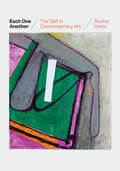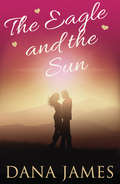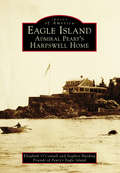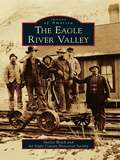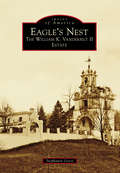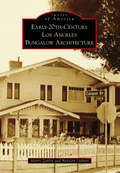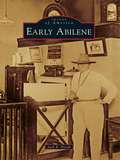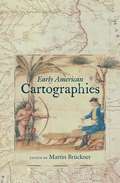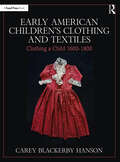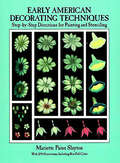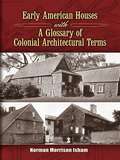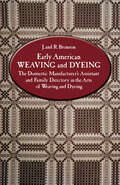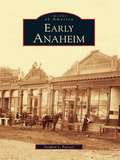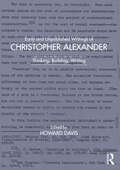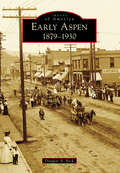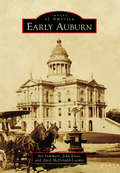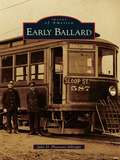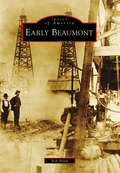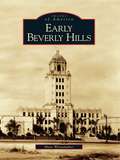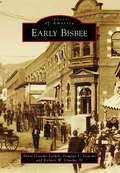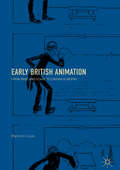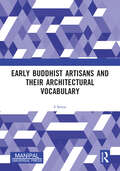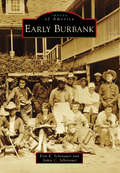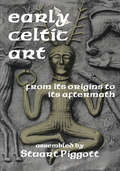- Table View
- List View
Each One Another: The Self in Contemporary Art
by Rachel HaiduA consideration of how contemporary art can offer a deeper understanding of selfhood. With Each One Another, Rachel Haidu argues that contemporary art can teach us how to understand ourselves as selves—how we come to feel oneness, to sense our own interiority, and to shift between the roles that connect us to strangers, those close to us, and past and future generations. Haidu looks to intergenerational pairings of artists to consider how three aesthetic vehicles––shape in painting, characters in film and video, and roles in dance––allow us to grasp selfhood. Better understandings of our selves, she argues, complement our thinking about identity and subjecthood. She shows how Philip Guston’s figurative works explore shapes’ descriptive capacities and their ability to investigate history, while Amy Sillman’s paintings allow us to rethink expressivity and oneness. Analyzing a 2004 video by James Coleman, Haidu explores how we enter characters through their interior monologues, and she also looks at how a 2011 film by Steve McQueen positions a protagonist’s refusal to speak as an argument for our right to silence. In addition, Haidu examines how Anne Teresa de Keersmaeker’s distribution of roles across dancers invites us to appreciate formal structures that separate us from one another while Yvonne Rainer’s choreography shows how such formal structures also bring us together. Through these examples, Each One Another reveals how artworks allow us to understand oneness, interiority, and how we become fluid agents in the world, and it invites us to examine—critically and forgivingly—our attachments to selfhood.
The Eagle and the Sun: Agents of Independence Series
by Dana JamesDuring her trip to Mexico, jewellery designer Cass Elliot was to visit the Ibarra opal mines to see the origin of the lovely stones she used and gain inspiration for future designs. She’s unable to prevent Derek Prentice accompanying her, and as her boss’s son he’s not easy to deflect. It doesn’t help to discover that Miguel Ibarra is not expecting them. Just when Cass feels she’s begun to make a better impression on Miguel, Derek becomes difficult and Cass is introduced to Miguel’s fiancée. She no longer knows what to think – will Mexico be the summit of her dreams, or the loss of all hope?
Eagle Island: Admiral Peary’s Harpswell Home (Images of America)
by Stephen Harding Elizabeth O'Connell Friends Of IslandEagle Island, located off the coast of Harpswell, Maine, is far enough into Casco Bay to offer isolation but close enough to capture the fascination of a young man. Its rocky spine meets the open Atlantic in rugged cliffs with the strength to transform the momentum of ocean swells into plumes of brilliant spray. The interior, covered with a diversity of flora, presents a gentle welcoming to seabirds and the occasional fauna. Robert E. Peary, a Bowdoin College graduate, bought the island and, using local craftsmen, built a cottage for his family to use as their summer home. After his discovery of the North Pole in 1909 with its celebration and controversy, Eagle Island became the family retreat, a refuge from the public scrutiny attendant an international hero. This is the story of three generations of the Peary family and their Eagle Island home. Peary’s “Promised Land,” now a State of Maine Historic Site and museum, has become a magical place for countless visitors, resulting in its designation as a National Historic Landmark in 2014.
Eagle River Valley, The
by Shirley Welch Eagle County Historical SocietyStarting as a trickle in the Rocky Mountains, the Eagle River emerges in a glacial valley, cuts through a spectacular gorge near Red Cliff, and then creates the broad flood plain of the Eagle River Valley. At Dotsero, the river joins the mighty Colorado River. As long as humans have settled along the river, they have depended on it for their livelihood, trapping beaver for hats, mining gold and silver, collecting water for locomotive engines and channeling it for crops and ranching, harvesting ice for food preservation, and, most recently, converting water into snow with modern machines. Today the Eagle River Valley is the backbone of two of the greatest ski areas in the world, Vail and Beaver Creek. Sparkling through the ancient riverbed, the Eagle River continues its course to this day, flowing through the same valley that drew pioneers here in the 19th century.
Eagle's Nest: The William K. Vanderbilt II Estate
by Stephanie GressDesigned and constructed by the eminent New York City architectural firm of Warren & Wetmore, Eagle's Nest estate is the easternmost Gold Coast mansion on Long Island's affluent North Shore. From 1910 to 1944, the palatial Spanish Revival estate was the summer home of William K. Vanderbilt II, great-grandson of Commodore Cornelius Vanderbilt. Eagle's Nest hosted the most exclusive guests and intimate gatherings of Vanderbilt family members and close friends. Included among them were the Duke and Duchess of Windsor, golfer Sam Snead, and the Tiffanys. Vanderbilt embarked on many of his legendary world voyages from this locale, along with a 50-person crew and a few fortunate invited passengers. During his travels, he collected natural history specimens and ethnographic artifacts from every corner of the earth. With the help of scientists and museum professionals, Vanderbilt created exhibits at Eagle's Nest to showcase his collections. "Willie K.," as he was known, bequeathed his estate and museum to the public, fulfilling his intended mission.
Early-20th-Century Los Angeles Bungalow Architecture (Images of America)
by Harry Zeitlin Bennett GilbertLos Angeles, California, shaped the nation's culture in the 20th century with the city's bungalow style of mass middle-class housing. The style made the novelty and easy climate of Los Angeles into a force for living according to new standards of health and well-being, freedom and openness, and simple artistry. The bungalow combined the cozy appeal of Arts and Crafts design with what became the basic principles of 20th-century house architecture: earth-hugging lines, visible structure, and open floor plans emphasizing warmth, intimacy, and fluidity. While the streets and neighborhoods of the "bungalowtown" presented a lively panorama in which each house stood out as an individual, the bungalow was also a dream that the real estate industry sold to exploit the hunger for upward mobility that brought hundreds of thousands of new residents to the city during the three decades of the popularity of the style. Some of the neighborhoods that the developers established failed, and many homes were eventually demolished or in advanced decay. Yet today, these old houses are beautiful and comfortable homes when restored.
Early Abilene
by Jack E. NorthDuring the 1870s, there was wondrous change in West Texas. The area was ripe for settlement, and as the Texas and Pacific Railroad pushed west from Fort Worth, towns began springing up along the tracks. Ranchers coming to the area took advantage of the vast grasslands, and the new arrival of settlers was the beginning of a town named Abilene. Deriving its namesake from the town of Abilene, Kansas, the locals hoped the city would become a shipping point for cattle on their way to eastern markets. The town has since grown to be one of West Texas's most thriving metropolitan areas. The city--which is home to Dyess Air Force Base--is also well known for its numerous parks, schools, universities, and historic neighborhoods that are enjoyed by its 120,000 residents.
Early American Cartographies
by Martin BrücknerMaps were at the heart of cultural life in the Americas from before colonization to the formation of modern nation-states. The fourteen essays in Early American Cartographies examine indigenous and European peoples' creation and use of maps to better represent and understand the world they inhabited. Drawing from both current historical interpretations and new interdisciplinary perspectives, this collection provides diverse approaches to understanding the multilayered exchanges that went into creating cartographic knowledge in and about the Americas. In the introduction, editor Martin Bruckner provides a critical assessment of the concept of cartography and of the historiography of maps. The individual essays, then, range widely over space and place, from the imperial reach of Iberian and British cartography to indigenous conceptualizations, including "dirty," ephemeral maps and star charts, to demonstrate that pre-nineteenth-century American cartography was at once a multiform and multicultural affair. This volume not only highlights the collaborative genesis of cartographic knowledge about the early Americas; the essays also bring to light original archives and innovative methodologies for investigating spatial relations among peoples in the western hemisphere. Taken together, the authors reveal the roles of early American cartographies in shaping popular notions of national space, informing visual perception, animating literary imagination, and structuring the political history of Anglo- and Ibero-America.The contributors are: Martin Bruckner, University of Delaware Michael J. Drexler, Bucknell UniversityMatthew H. Edney, University of Southern MaineJess Edwards, Manchester Metropolitan UniversityJunia Ferreira Furtado, Universidade Federal de Minas Gerais, BrazilWilliam Gustav Gartner, University of Wisconsin-MadisonGavin Hollis, Hunter College of the City University of New YorkScott Lehman, independent scholarKen MacMillan, University of CalgaryBarbara E. Mundy, Fordham UniversityAndrew Newman, Stony Brook UniversityRicardo Padron, University of VirginiaJudith Ridner, Mississippi State University
Early American Children’s Clothing and Textiles: Clothing a Child 1600-1800
by Carey Blackerby HansonEarly American Children’s Clothing and Textiles: Clothing a Child 1600–1800 explores the life experiences of Indigenous, Anglo-European, African, and mixed-race children in colonial America, their connections to textile production, the process of textile production, the textiles created, and the clothing they wore. The book examines the communities and social structure of early America, the progression of the colonial textile industry, and the politics surrounding textile production beginning in the 1600's, with particular focus on the tasks children were given in the development of the American textile industry. The book discusses the concept of childhood in society during this time, together with documented stories of individual children. The discussion of early American childhood and textile production is followed by extant clothing samples for both boys and girls, ranging from Upper-class children's wear to children's wear of those with more humble means. With over 180 illustrations, the book includes images of textile production tools, inventions, and practices, extant textile samples, period portraits of children, and handmade extant clothing items worn by children during this time period. Early American Children’s Clothing and Textiles: Clothing a Child 1600–1800 will be of interest to working costume designers and technicians looking for primary historical and visual information for Early American productions, costume design historians, early American historians, students of costume design, and historical re-enactment costume designers, technicians, and hobbyists.
Early American Decorating Techniques: Step-by-Step Directions for Painting and Stenciling
by Mariette Paine SlaytonComprehensive guide includes 27 authentic, ready-to-use, full-size patterns for restoring and decorating trays, tinware, boxes, rockers, chairs, walls, and more. Complete instructions.
Early American Houses: With A Glossary of Colonial Architectural Terms
by Norman Morrison IshamAn intriguing examination of classic colonial houses, this fact-filled foray explores with remarkable concision the "medieval period" of American architecture. The treatise takes for its examples the first houses built along the Atlantic coast in the seventeenth century. While these early structures were usually based on traditional English and Dutch styles, their design and methods of construction soon acquired a unique character of their own. Geographically remote from the stylistic restrictions of Europe, American architects used new plans and construction elements to create fresh new dwellings with individual beauty and charm. Early American Houses includes over 100 photographs and illustrations that highlight the architecture of young America, with a particular focus on the Tudor and late Gothic styles that ultimately shaped the distinctive house designs of today. Original floor plans and sketches abound -- including interior and exterior treatments, elevations, and framing -- partnered with detailed descriptions that breathe life into each construction. Accompanying this work is a comprehensive Glossary of Colonial Architectural Terms. Originally published separately, it provides definitions for everything from "arch" to "wainscot," and it is reprinted here to enhance the overall value of the companion volume.
Early American Weaving and Dyeing
by J. And BronsonThis landmark work is a practical and historical guide to hand-weaving patterns and dye recipes. It revolutionized 19th-century practices by revealing closely held trade secrets to home weavers and dyers, and giving recipes the home craftsman could use. While not intended for the beginner, this book is a great source of early weaving crafts and authentic dye recipes for craftsmen who know the fundamentals of weaving and dyeing.Of greatest value, perhaps, are the 35 weaving crafts with their instructions. Included are Bird Eyes, Herring Bone, Eight Shaft Coverlet, Diamond Coverlet, Plain Block Carpet, Damask Diaper, Curtain Diaper, and more. Then come dye recipes and methods for dyeing cotton and wool, all using natural dyes. Also included are tables and calculations for the size and amount of yarn required for various projects, a description of dye-woods and drugs, recipes for varnishes and satins, and more.For this edition Rita J. Adrosko, Curator of the Division of Textiles of the National Museum of History and Technology, has written a helpful introduction containing information on how best to make use of this volume as well as a short glossary of terms. With only a few adaptations to contemporary methods, the modern home weaver and dyer can make great practical use of this valuable book.
Early Anaheim (Images of America)
by Stephen J. FaesselAs one of the largest cities in one of the nation's most populous counties, Anaheim anchors a host of Orange County attractions, not the least of which are Disneyland, the 2002 World Champion Anaheim Angels, and the Anaheim Convention Center. But Anaheim's early history followed the hardscrabble route, with fitful years of early cityhood steered in part by hardy immigrant German vintners who, with a civic-mindedness, advanced the establishment of the churches, schools, banks, civic services, and a Carnegie Library that made Anaheim thrive. This collection of more than 200 vintage images reveals the foresight of such men as John Frohling, Charles Kohler, George Hansen, John Fischer, August Langenberger, and others who shaped the beginnings of one of California's great cities.
Early and Unpublished Writings of Christopher Alexander: Thinking, Building, Writing
by Howard DavisThis book brings together key works of the noted architect and architectural theorist Christopher Alexander (1936–2022), many of which have not been published before. The book contains twenty-five essays and other works, many chosen from the newly organized Christopher Alexander archive, providing a window into the ideas and thought process of one of the most innovative architectural thinkers of the twentieth century. The items span Alexander’s fifty-year career, beginning with an early version of his PhD dissertation based on fieldwork in India, continuing to fifteen years in the development of A Pattern Language, one of the best-selling books in the history of architecture, and proceeding to the writing of The Nature of Order, Alexander’s four-volume masterwork, and beyond. The writings combine theory and descriptions of practice, and together support a blueprint for the development of a new, humane way of building, while also providing a window into the mind of an extraordinary thinker, teacher and professional.
Early Aspen: 1879-1930
by Douglas N. BeckUntil 1879, the Roaring Fork Valley was home to a band of Colorado Ute Indians. All of that changed in the summer and fall of that year, when two prospecting teams came to the valley to stake their claims, some of which went on to produce millions of dollars of silver. Within five years, Aspen was home to over 20,000 individuals including miners, lawyers, families, businessmen, and even prostitutes. Aspen's fortune was tied to silver. More importantly, its fate was ultimately tied to the Sherman Silver Purchase Act of 1890, which required the US government to buy 4.5 million ounces of silver per month. From 1890 to 1893, the Sherman Act kept Aspen alive and growing. With the repeal of the act, Aspen began a slow, painful decline. This book covers the years of Aspen's discovery, through the years of decline, and into what is known as the "Quiet Years."
Early Auburn
by Art Sommers April Mcdonald-Loomis John KnoxLocated at the junction of gold-rich ravines, Auburn was the site of the first gold discovery in Placer County. Though the superficial gold was quickly panned out, by 1850, the town had become an important trading center. Auburn became a center for goods, services, entertainment, and a place for miners to "winter-over." More importantly, it became a transportation hub. As the county seat, Auburn's hotels, saloons, and merchants experienced a steady stream of customers as county residents came to town to deal with legal matters. Though plagued by numerous destructive fires, the citizens of Auburn rebuilt, and the town continued to thrive. This book will introduce the reader to some of the individuals who were instrumental in shaping Auburn as it grew into the town it is today.
Early Ballard
by Julie D. Pheasant-AlbrightThe first land claim in what would become the city of Ballard was made in 1852, but it wasn't until a ship captain named William Rankin Ballard lost a bet with a business partner and found himself the owner of 160 acres of seemingly worthless land that the city prospered and became the "Shingle Capital of the World." Incorporated in 1890, Ballard grew quickly, thanks to shingle and lumber mills and the Scandinavian fishing fleet. When a horse was supposedly found in the city water supply in 1906, reluctant Ballardites voted to be annexed to the city of Seattle, and the flag flew at half-staff at Ballard City Hall. Home to the Nordic Heritage Museum, Chittenden Locks, and the fishing fleet, this bustling city-within-a-city still retains its unique Scandinavian flavor to this day.
Early Beaumont
by Rob BlainBeaumont was born when the thickly wooded banks of the Neches River were settled in the 1820s. Businessmen and adventurers stayed in the area once they saw the advantages of the river and the region's abundance of timber and other agricultural resources. By 1880, Beaumont was a lumber, ranching, farming, and shipping center. The railroad spurred population growth from 2,500 to 5,000, then Providence intervened: the Lucas Gusher at Spindletop blew in on January 10, 1901, and suddenly more oil than had ever been seen ushered in a new world. The Rockefeller Standard Oil monopoly may have ended in the courts, but Spindletop's oil dwarfed the known world supply, creating companies like Humble Oil (now ExxonMobil), Gulf, and Texaco. Beaumont continued to grow, and with a second boom in 1925, flowing oil brought more people and the building of a gracious city.
Early Beverly Hills
by Marc WanamakerWay before Rodeo Drive and the "pink palace" of the Beverly Hills Hotel were built, way before the namesake hillbillies, its zip code, and Eddie Murphy's detective techniques reaffirmed its place in popular culture, and way before its 1,001 mansions, Beverly Hills was comprised of wild canyons and ranchlands. Burton Green, one of the three original land developers of the Rancho Rodeo de las Aguas, named this place of severe terrain after Beverly Farms, Massachusetts, a 19th-century spa. Since its establishment in 1907, Beverly Hills, California, has been a crossroads for the great movers and shakers of the entertainment industry as well as the tycoons, world leaders, and flotsam and jetsam magnetized by the limelight. The vintage photographs in this provocative volume illustrate Beverly Hills's early transition from cow pastures to Hollywood's extremely illustrious bedroom community.
Early Bisbee
by Annie Graeme Larkin Douglas L. Graeme Richard W. Graeme IVBefore Bisbee became a bustling mining camp, it was a haven to Native Americans for centuries. However, their presence brought the intrusion of army scouts and prospectors into the Mule Mountains. The coincidental discovery of vast mineral wealth at the future site of Bisbee permanently affixed the fate of the land forever. Rising from the remote desert was a dynamic mining city, a city that grew into one of the most influential communities in the West. Bisbee was unique in the Old West because of the mixed moral values. High society and the decadent underworld lived in a delicate balance, but a vibrant multicultural community was forged from these social fires.
Early British Animation: From Page And Stage To Cinema Screens
by Malcolm CookThis book is the first history of British animated cartoons, from the earliest period of cinema in the 1890s up to the late 1920s. In this period cartoonists and performers from earlier traditions of print and stage entertainment came to film to expand their artistic practice, bringing with them a range of techniques and ideas that shaped the development of British animation. These were commercial rather than avant-garde artists, but they nevertheless saw the new medium of cinema as offering the potential to engage with modern concerns of the early 20th century, be it the political and human turmoil of the First World War or new freedoms of the 1920s. Cook’s examination and reassessment of these films and their histories reveals their close attention and play with the way audiences saw the world. As such, this book offers new insight into the changing understanding of vision at that time as Britain’s place in the world was reshaped in the early 20th century.
Early Buddhist Artisans and Their Architectural Vocabulary
by S SettarThe early Buddhist architectural vocabulary, being the first of its kind, maintained its monopoly for about half a millennium, beginning from the third century BCE. To begin with, it was oral, not written. The Jain, Hindu, and other Indian sectarian builders later developed their vocabulary on this foundation, though not identically. This book attempts to understand this vocabulary and the artisans who first made use of it. Print edition not for sale in South Asia (India, Sri Lanka, Nepal, Bangladesh, Pakistan and Bhutan)
Early Burbank
by Erin K. Schonauer Jamie C. SchonauerBurbank is an innovator, a world traveler--a city with artistic flair and creativity. From the entertainment industry taking up residence in the early 20th century to the Lockheed Aircraft Company opening shop in 1928, Burbank's masterpieces have transcended the coasts. Films shot on Burbank back lots and streets have entertained audiences worldwide. Lockheed planes built on Burbank soil flew across the world with the likes of Amelia Earhart and Charles Lindbergh. Once a robust farming community, Burbank, founded on May 1, 1887, and later incorporated as a city on July 8, 1911, dons its name from Dr. David Burbank, a New Hampshire-born dentist who, in 1867, bought over 9,000 acres of land amid the sun-kissed foothills of the Verdugo Mountains--land that was awaiting creative cultivation.
Early Celtic Art: From Its Origins to Its Aftermath
by Joel GibbonsFor many, perhaps most, the title Early Celtic Art summons up images of Early Christian stone crosses in Ireland, Scotland, Wales, or Cornwall; of Glendalough, lona or Tintagel; of the Ardagh Chalice or the Monymusk Reliquary; of the great illuminated gospels of Durrow or Lindisfame. But as Stuart Piggott notes, the consummate works of art produced under the aegis of the early churches in Britain or Ireland, in regions Celtic by tradition or language, have an ancestry behind them only partly Celtic.One strain in an eclectic style was borrowed from the ornament of the northern Germanic world, the classical Mediterranean, and even the Eastern churches. Early Celtic art, originating in the fifth century b.c. in Central Europe, was already seven or eight centuries old when it was last traced in the pagan, prehistoric world, and the transmission of some of its modes and motifs over a further span of centuries into the Christian Middle Ages was an even later phenomenon. This volume presents the art of the prehistoric Celtic peoples, the first great contribution of the barbarians to European arts.It is an art produced in circumstances that the classical world and contemporary societiesunhesitatingly recognize as uncivilized. Its appearance, it has been said by N. K. Sandars in Prehistoric Art in Europe: "is perhaps one of the oddest and most unlikely things to have come out of a barbarian continent. Its peculiar refinement, delicacy, and equilibrium are not altogether what one would expect of men who, though courageous and not without honor even in the records of their enemies, were also savage, cruel and often disgusting; for the archaeological refuse, as well as the reports of Classical antiquity, agree in this verdict."This book comprises the first major exhibition of Early Celtic Art from its origins and beginnings to its aftermath, and was assembled by Stuart Piggott who taught later European prehistory to Honors students in Archaeolog
Early Christian and Byzantine Art (Art And Ideas)
by John LowdenJohn Lowden provides an authoritative account of early Christian and Byzantine art from the third century AD to the fall of Constantinople in 1453. From the grandest public buildings to the smallest personal items, it was - and still is - an art of extraordinary directness, but also of mystery and transcendence. Lowden explains how and why early Christian and Byzantine art was made and used, and situates it within the controversies of its time.
